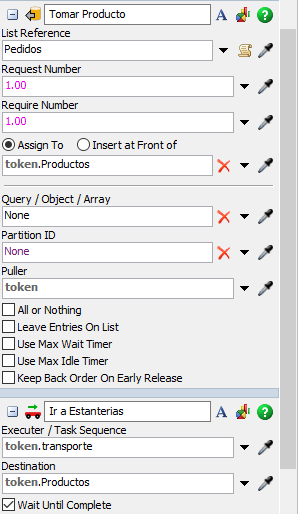Saludos. Estoy realizando una simulación en el cual se debe tomar algunos productos de los racks para luego almacenarlos en diferentes colas, estos productos tienen etiquetas las cuales quiero almacenar según su correspondiente etiqueta. Estoy utilizando operarios para que transporten los productos, pero ellos solo los toman de forma aleatoria y no según su etiqueta. Para el desarrollo de este proceso estoy utlizando la herramienta process Flow.
Espero puedan ayudarme. Gracias!





